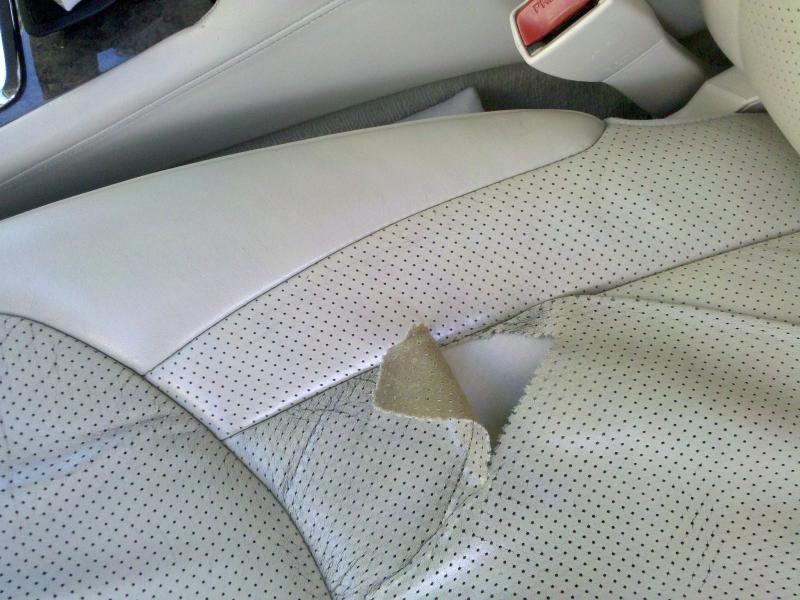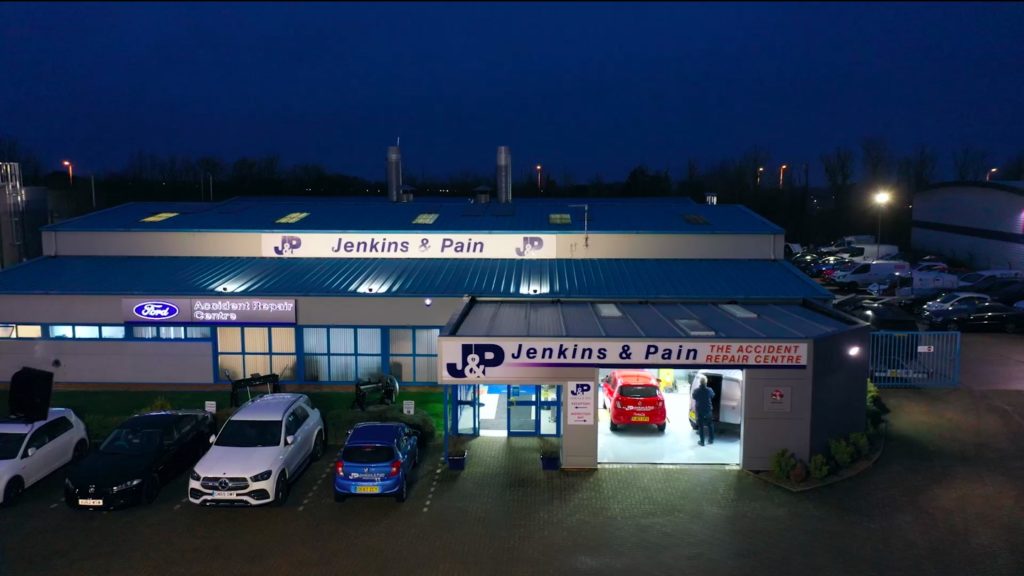Whether you’ve just bought a used car with ripped leather seats or your longtime vehicle is starting to show some wear and tear, there’s no reason to ride around with ripped leather car seats. Yes, you heard correctly: it really is possible to restore car seats back to their previous state. After you treat your seats, they’ll look just as good, if not better than they did before! The car paint job and kerbed alloys experts at our car and van body repair centre explain how to repair leather car seats yourself…
All About Leather Car Seats
Gone are the days where leather car seats are exclusively reserved for super expensive cars. Now, it’s possible to find a car that’s both affordable and offers features that are typically considered “luxurious” — including one with leather car seats. Leather car seats are popular for several reasons. Not only do they add a bit of polish to the interior of the car, but leather seats are also comfortable and can hold up better than fabric seats. That being said, your car gets a lot of use — and consequentially, seats get a bit of wear and tear. That’s completely normal and even expected. With that said, having cracked leather seats can be uncomfortable and cheapen the appearance of your car. Fixing them doesn’t have to be extremely laborious nor costly. There are some disadvantages to choosing leather seats over fabric seats. For one, leather can crack, scratches more easily, heats up in the summer, and stays cold in the winter. Still, few things are quite as polished in appearance as a car with fresh, clean leather seats. Leather seats offer other advantages over fabric, however. Besides adding an air of luxury to the vehicle, leather seats also don’t hold odor the same way a fabric seat does. Also, it’s easier to clean a leather seat than a fabric one, so there’s no need to worry if you spill your latte all over the seat and make a mess. It’ll be substantially easier to clean with leather than fabric, after all. Ultimately, leather requires something important: maintenance. If you make a diligent effort to maintain your leather car seats, they’re less likely to crack, rip, or end up unsightly in one way or another. Our kerbed alloys and car paint job experts at our van body repair centre know that maintenance doesn’t have to be difficult or too expensive.

How To Prevent Leather Car Seats From Ripping
We’ll preface our exploration of how to fix leather car seats with this expression: “An ounce of prevention is worth a pound of cure.” Like most things, it’s advisable to prevent any issues from arising instead of trying to fix them. In the context of your leather vehicle seats, that means taking care of them before cracks or rips occur. There are a few ways to do that. For one, using a leather cleaner and conditioner will help ensure that your seats are going to look and feel their best — and minimize their chances of ripping. This prolongs the life of the leather, and helps ensure that your leather seats are revived, softened, and moisturized. If you’ve already found your leather seats to be ripped, it’s possible to repair them and then commit to maintenance moving forward to prevent the problem from recurring.
How To Repair Ripped Leather Car Seats
If you’re looking to give your ripped leather car seats some new life, here’s how our van body repair specialists recommend to go about it. First, it’s essential to ensure that your car seats are clean. This means using a leather cleaner to guarantee that the seats are ready for cleaning. With leather car seats, it’s typical that the flat panels on the bottom and back of the seats are made of actual leather, while the sides are often vinyl that is colour-matched. This allows for greater flexibility, which is valuable in this area of the car. Cleaning the car seats first allows for any dirt or other contaminants hiding on the seats to be removed. Second, begin patching the leather seats. This means using masking tape to plot out the area that you’re going to fix. Then, using the patching material, apply in thin layers using a palette knife to the exposed backing material. Once you’ve applied a few layers, you’ll begin a process called “curing the repair.” To do this, use a heat gun, and press a flexible piece of material with a grainy surface into the allotted area you’re fixing up. This should match the surrounding area’s texture. When the patch dries, it should be almost ready for the colour topcoat to be applied. This is what’s going to make a big difference in the appearance of the seat. It’s time to clean the surface up yet again and apply a vinyl-prepping compound. This will make sure the colour will work properly. It’s a good idea to do a “tape test” to ensure that the surface will hold the dye. Lastly, you’ll spray on the topcoat colour. It can prove to be pretty difficult to match the seat’s colour, so if you’re unsure, experiment a bit with mixing colours to make sure you get the right match before you complete the entire process. Congratulations: You’ve got yourself a repaired car seat.
How To Maintain Repaired Leather Car Seats
As you can see, there’s a bit of a process that goes into fixing ripped leather car seats. It’s important to maintain your seats after you’ve completed the repair once, so you don’t have to do it again. Lack of maintenance is one reason that leather car seats can rip or tear, so make sure that you treat your leather car seats every six months. This helps ensure that your seats last long and look great. You might be wondering what exactly it takes to maintain leather car seats. We can answer that for you. Taking care of your leather car seats means ensuring that they aren’t dirty or grimy. Begin by using a vacuum to clean up any dirt or grime. After you’ve completed this, take a microfiber towel or even a spare toothbrush and use a leather cleaner to wipe the seats down. If you have perforated leather, it’s important to put this cleaner on the towel instead of directly onto the car seat. Allow some time for it to soak in, but keep this away from direct sunlight. Afterward, you can buff it with a cleaning cloth.

Why Is It Important to Maintain Leather Car Seats?
Maintaining leather car seats isn’t timely nor difficult, but it’s essential to do to prevent ripping and tearing. Leather requires a bit more effort to take care of, but it’s worth it when it looks polished, provides a comfortable car seat, and holds up for a long time.
Use Jenkins & Pain, Award-Winning Accident Repair Centre
There you have it, if you do find yourself with damage to your beloved paintwork or kerbed alloys and need a car repair, van repair or courtesy car you can count on us to complete all jobs using industry-standard processes. We offer free quotes and with our exclusive repair service, we are sure you will be happy with the results. Contact our Vehicle Body Shop today. Jenkins & Pain are an accident repair centre based in Dover, Kent. We are proud to call ourselves an award-winning accident repair centre. Check out our guide on how to look after your alloys!
Ready to Visit Our Vehicle Body Shop?
We understand how costly and inconvenient it is for a vehicle to be off the road and, therefore, we use processes that ensure your vehicle is repaired quickly and efficiently. So, whether you need minor scratch repairs, major body repair, our van body shop and car body shop can guarantee a high-quality service. We also repair light commercial vehicles and motorhomes. Contact us today for a paint repair at our Car Body Shop!


